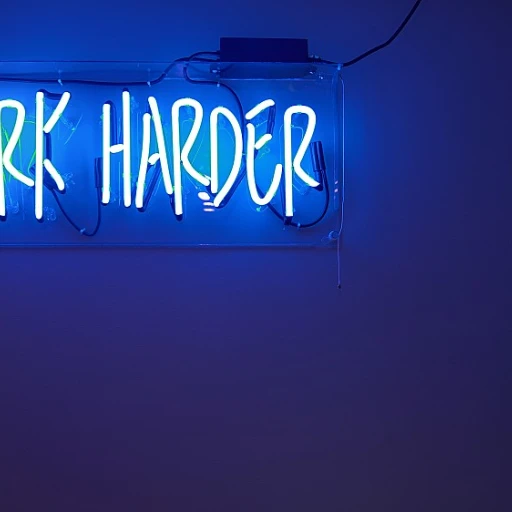Understanding the Importance of Diversity in the Workplace
Strength in Diversity: Why It Matters
In an increasingly globalized and interconnected world, the business landscape is continuously evolving, and so are the expectations and needs of the workforce. One of the pivotal factors driving this change is the growing recognition of the critical importance of diversity within the workplace. Companies that cultivate a diverse workforce are not only acknowledging the varied perspectives and ideas each individual brings but are also setting themselves up for greater innovation and success.
From different ethnic backgrounds to varied gender identities and experiences, diversity encompasses a wide range of human differences, all of which contribute uniquely to a company's culture and performance. By fostering an inclusive atmosphere, organizations can harness the full potential of their workforce, leading not only to enhanced creativity and problem-solving but also to a more engaging and enriching work environment.
Inclusion efforts, which are detailed further in section two, exemplify how companies are actively embracing this necessary paradigm shift. They are leading the way by implementing strategies to integrate diverse talent and cultivate a sense of belonging among employees.
Moreover, leadership plays a vital role in championing diversity and inclusion initiatives. It’s essential that leaders are equipped with the tools and mindset to support these efforts. As we will see in later sections, effective leadership can be a determining factor in the success of diversity initiatives.
As unconscious bias and equity issues come to light, businesses who proactively address these challenges position themselves as frontrunners in the movement towards a more fair and just workplace. By valuing and promoting diversity, companies can reap tangible benefits, which is evident in the real-world success stories featured in the upcoming segments.
The future trends in workplace diversity and inclusion suggest a continuous journey towards understanding, acceptance, and action for a more diverse and inclusive work culture. Embracing these changes not only aligns with societal progress but also paves the way for sustainable business success.
Inclusion Efforts: How Companies Are Leading the Way
Championing Diversity: Innovative Approaches by Leading Companies
In today's evolving business landscape, organizations that actively prioritize diversity and inclusion are setting the standard for others to follow. These companies have embraced innovative strategies to ensure that every employee, regardless of background, feels valued and has equal opportunities to succeed.
One approach that has gained significant attention is the establishment of diversity councils within organizations. These councils are tasked with assessing current diversity levels, setting measurable goals, and creating action plans to promote inclusivity throughout the workplace. By involving employees at all levels in these councils, businesses like Company X have been able to tap into the rich, varied perspectives of their teams, fostering an environment of mutual respect and understanding.
Additionally, leading companies are leveraging technology to facilitate inclusivity. With tools designed to ensure unbiased recruiting processes, such as AI-driven resume screenings and inclusive language checkers, they are reducing the impact of unconscious biases. These technological advancements complement the human efforts of training programs aimed at raising awareness and providing education on diversity-related topics.
Employee Resource Groups (ERGs) are also becoming a staple in companies dedicated to cultivating a sense of belonging. These voluntary employee-led groups are centered around shared characteristics or life experiences, providing support, enhancing career development, and contributing to personal development in the community.
As organizations continue to implement these inclusive strategies, it's worth noting that the role of leadership is crucial in sustaining these efforts. Transformative leaders who champion diversity not only influence their organizational culture but also attract top talent who value a respectful and supportive work environment.
By integrating such initiatives, companies illuminate the path to not only enhancing diversity within their workforce but also ensuring a competitive edge as they adapt to future trends in workplace diversity and inclusion.
Nurturing Diversity Through Effective Leadership
In an ever-evolving workplace landscape, leadership plays an integral role in embedding diversity and inclusion into the corporate DNA. Leaders who are committed to these values act as catalysts for positive changes, influencing the organization at all levels. Embracing a diverse workforce requires strategies that are not only about ticking the right boxes but genuinely transforming mindsets to acknowledge the potential of diverse perspectives.
Leadership in today’s world must prioritize fostering environments that respect all voices and celebrate differences. By investing in training programs and workshops that address biases and encourage open dialogue, leaders can pave the way for a more inclusive culture. Moreover, inclusion efforts undertaken by various companies demonstrate that successful diversity initiatives originate from the top tiers of management, where visionaries advocate and implement impactful changes.
Leaders also have the responsibility to mentor and sponsor diverse talent, ensuring that opportunities for advancement are equitable. Supportive leadership can dismantle the barriers that underrepresented groups often face, creating a workplace where everyone has the potential to thrive.
To achieve long-term success, organizations need leaders who understand the critical importance of diversity intersecting with inclusion. Facilitating open communication, integrating empathy in decision-making, and aligning with initiatives that promote well-being are all part of a holistic approach. Explore more about embracing employee well-being for future success
here.
Unpacking Unconscious Bias and Its Impact on Equity
While it's clear that promoting diversity and inclusion is gaining traction, one challenge that persists is addressing unconscious bias and fostering equity within organizations. Unconscious biases are the subtle, oftentimes unintentional, inclinations that influence decisions and attitudes against marginalized groups. These biases can create an uneven playing field, preventing organizations from harnessing the full potential of their diverse workforce.
Organizations need to embark on a journey of self-awareness and continuous education to combat these biases. Training programs and workshops are increasingly popular strategies employed by forward-thinking companies. These initiatives help employees recognize and mitigate their biases, promoting a fairer and more inclusive workplace.
Beyond training, establishing equitable practices within processes such as recruitment, performance evaluations, and promotions is essential. By standardizing these procedures, companies can ensure that decisions are made based on merit and potential rather than biases. This effort not only safeguards against unfair treatment but also fosters a culture of equity that aligns with the inclusion efforts highlighted in previous discussions.
Furthermore, employee resource groups (ERGs) and mentorship programs can serve as powerful tools to support underrepresented groups. These platforms empower employees, elevate diverse voices, and create opportunities for personal and professional growth. By incorporating these initiatives into their strategies, organizations demonstrate a commitment to equity that goes beyond policies and manifests in everyday practices.
As both leadership commitment and innovative strategies pave the way for a more inclusive environment, it becomes increasingly important to address and rectify unconscious biases. Failure to do so risks undermining the efforts made in fostering an inclusive culture, which are pivotal for unlocking the benefits of a diverse workforce discussed earlier.
The Benefits of a Diverse Workforce: Real-World Success Stories
Real-World Success Stories of Diverse Workforces
It's one thing to discuss the theoretical benefits of diversity in the workplace, but another entirely to see them in action. Across the globe, companies that have actively embraced diversity and inclusion strategies are reaping tangible rewards. These organizations illustrate the profound impact a diverse workforce can have on innovation, employee satisfaction, and overall business performance, as previously discussed.
Tech giant Microsoft is a prime example of a company that has leveraged its diverse talent pool to drive innovation. By fostering an inclusive culture that welcomes different perspectives, Microsoft has developed products that cater to a broader audience and meet the complex needs of its global customer base. Their deliberate approach to diversity and inclusion has not only positioned them as a leader in tech innovation but has also contributed to their bottom line by attracting top talent.
In the retail sector, clothing brand H&M has made significant strides in becoming more inclusive. By prioritizing diversity hiring and promoting accessible fashion lines, H&M has been able to connect with a wider audience, increasing customer loyalty and boosting sales. Their example highlights the benefits of challenging unconscious biases and driving equity, as explored earlier.
Meanwhile, healthcare company Kaiser Permanente has shown that a diverse workforce can lead to improved patient outcomes. By ensuring their teams reflect the communities they serve, they've been able to provide culturally competent care that meets patients' diverse needs. This approach has resulted in higher patient satisfaction scores and sets a benchmark for other organizations striving to achieve inclusivity.
These success stories exemplify the myriad advantages companies can experience by committing to diversity and inclusion. They also offer a roadmap for other organizations to follow, demonstrating that when diversity is woven into the fabric of a company’s strategy, the returns can be transformative. As we look ahead, it's clear that diversity and inclusion will continue to be crucial drivers of success, shaping the future of work in significant ways.
Future Trends in Workplace Diversity and Inclusion
Emerging Trends and Pathways in Diversity and Inclusion for the Future Workplace
As we look to the horizon of workplace diversity and inclusion, several trends are expected to shape organizations aiming for a more inclusive future. Companies are keenly aware of the evolving demographics and the pressing need to address diversity from multifaceted dimensions such as age, gender, ethnicity, and sexual orientation. But what fresh paths are organizations exploring to ensure they remain inclusive and forward-thinking?
The integration of technology and data analytics is rapidly advancing how companies measure and enhance their diversity efforts. With a more data-driven approach, organizations can better assess their current diversity landscape and identify opportunities for improvement. This allows them to make informed decisions that not only benefit their workforce but also bolster their competitive edge.
Moreover, there's a growing emphasis on fostering inclusivity beyond just policies, focusing more on creating a genuine culture of belonging. This cultural shift encourages companies to not only recognize but also celebrate differences, thereby enriching the workplace experience for everyone. Initiatives around employee resource groups, mentorship programs, and tailored training sessions are gaining momentum, providing more personalized support and development opportunities.
Another significant trend is the global exchange of ideas and best practices. Businesses are increasingly collaborating across borders, sharing insights and strategies that have proved successful in various cultural contexts. This approach not only helps organizations learn and adapt but also broadens their perspective on diversity and inclusion issues.
Finally, the future of workplace diversity is also being shaped by a new generation of workers who prioritize inclusion as a core value. These employees are challenging traditional workplace norms and advocating for more equitable and inclusive practices, pushing organizations to be more transparent and accountable in their diversity journeys.
Addressing unconscious bias and promoting equity remain crucial as these trends unfold. As highlighted earlier in the article, comprehensive training and awareness will continue to be critical in dismantling stereotypes and ingrained biases that obstruct progress.
By embracing these emerging trends and being proactive in implementing innovative diversity initiatives, organizations can position themselves for success in an increasingly diverse world.



